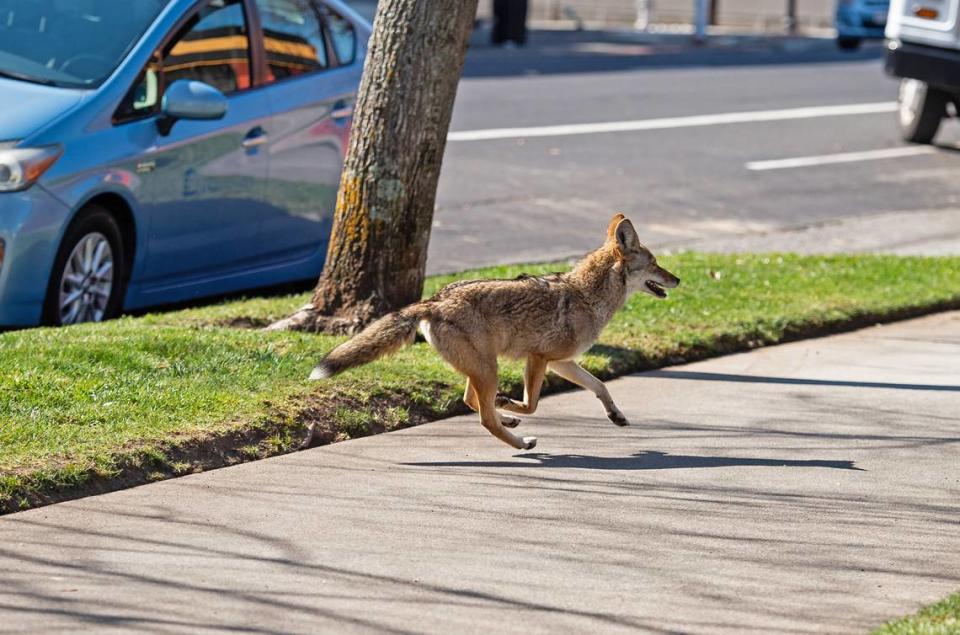Run into a coyote in your California neighborhood? Here’s what to do (and not do)
Hundreds of thousands of coyotes roam California — and these “extremely intelligent” predators don’t mind hanging around humans.
Coyote sightings in urban areas are common. Sacramento’s close proximity to habitats like the American River Parkway, for example, means sometimes these animals can make their way all the way to midtown.
An estimated 250,000 to 750,000 coyotes live in the state, according to the U.S. Department of Agriculture.
“Coyote attacks on people are very rare,” stated the Humane Society on its website. In most cases, people were bit by a coyote as a result of trying to feed it or “trying to rescue their free-roaming pet from a coyote attack.”
While coyotes prefer prairies and deserts, they appear in the city, hiding behind bushes and wooded patches, according to the Urban Coyote Research Project. In these areas, there’s garbage, mice, rabbits, pet food, compost and — evidently — cats they can hunt.
In a recent California coyote attack, a father saved his toddler from being dragged away in their Woodland Hills neighborhood.
Guy Galante, Wildlife Educator at Project Coyote, shared tips with The Sacramento Bee on what to do if you encounter a coyote:
Coyote in your neighborhood
Spotting a coyote in your neighborhood can be a scary encounter.
“The coyote is an extremely intelligent predator that has adapted to living in close proximity to humans,” the city of Sacramento said on its website.
Though it is important to keep in mind if a coyote is in an urban setting they are typically trying to get from point A to point B, Galante said. Here are some tips to keep handy if you find yourself in a coyote encounter:
Keep your distance and let the coyote move through.
If the coyote starts approaching you, and you’re feeling threatened, make yourself big. If you’re wearing a jacket, put your arms out and flap them like they are wings.
Stomp your feet.
Yell at the coyote and be very firm and say things like, “hey coyote, go away coyote!” In other words, use loud noises to scare it off.

Ask yourself ‘why was a coyote here?’
Coyotes travel outside of their natural habitats because they want something. When you have had an encounter with a coyote, you want to look around your surroundings and distinguish why the coyote was there, Galante said.
Coyotes are naturally fearful of humans, but their behavior will change if human food and garbage is accessible to them, according to the department of fish and wildlife.
Here are some points to keep in mind that could be attracting a coyote into your residence:
Open trash bins
Fruit trees
Compost
Leaky faucets that a coyote can have access to
A hole under a deck that’s making it a safe place to hangout
Walking your dog
If you encounter a coyote while walking your dog you want to assure you have your dog on a leash and have control of your dog, too. If your dog is little, you should just pick it up.
“It’s really about self preservation, but coyotes will engage with domestic dogs if they’re really threatened,” Galante said.
What do you want to know about life in Sacramento? Ask our California Utility Team your top-of-mind questions in the module below or email utilityteam@sacbee.com.

 Yahoo Movies
Yahoo Movies 
